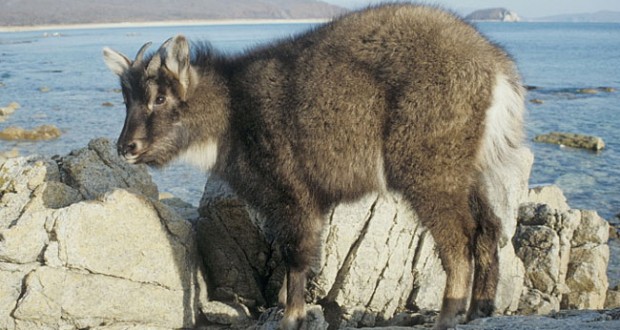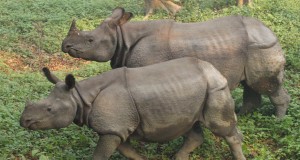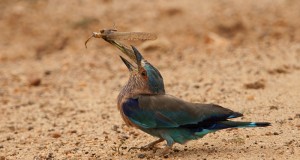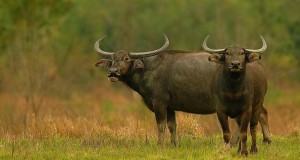JAMMU AND KASHMIR: In the Central and Western ranges of the Himalaya are the mountains of Kashmir known to most tourists. In fact the state ranges from the Punjab plains to the Tibetan plateau. The north is bounded by the Karakoram mountains, the east by Tibet and the Great rHlyangei. lTmahe Inaadnus- river cuts through the state as it flows east to west and into Pakistan. Large areas of good wildlife habitat fall outside protected areas: the snow leopard range covers most of Ladakh district; the Tibetan wild ass (kiang) and the blacknecked crane survive in fairly secure but extremely small numbers near the Chinese border, east of Leh. The western and southern parts of the state are affected by the monsoon while precipitation beyond the Great Himalayan range is often limited to winter snowfall. Conservation in Ladakh is fairly recent and there is little tourist infrastructure. Like Himachal Pradesh to the southeast and much of Nepal, the only way to see the area is by trekking. Many travel agencies in Delhi can advise on treks and limited equipment is available in Srinagar. Hiring of warm clothing and sleeping bags is not recommended— bring your own! For information contact: The Chief Wildlife Warden, Tourist Reception Centre, Srinagar 190001, Kashmir (Tel: 75411).
Dachigam N.P
Originating as a game reserve and then further developed to protect the catchment area for much of the drinking water supply of Srinagar, 13 miles (21 km) to the west, it now covers an area of 54 sq miles (141 sq km). Today the park is famous as the home of the last viable population of hangul.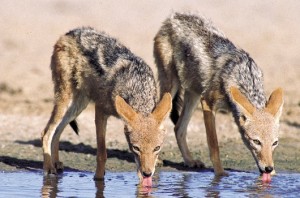 Other species found include both the brown and black Himalayan bear, musk deer and fox and over 150 species of birds. A metaled road links Srinagar with lower Dachigam. Upper Dachigam (14,072 feet/4289 meters) should be reached on foot. Best time to visit: May—Aug. Upper Dachigam; Sept.—Dec. in lower Dachigam. Accommodation: 2 lodges and resthouses; hotels and house-boats in Srinagar. Permission: The Chief Wildlife Warden, Srinagar Nearest town and Air: Srinagar (20 miles) Rail: Jammu (196 miles/315 km)
Other species found include both the brown and black Himalayan bear, musk deer and fox and over 150 species of birds. A metaled road links Srinagar with lower Dachigam. Upper Dachigam (14,072 feet/4289 meters) should be reached on foot. Best time to visit: May—Aug. Upper Dachigam; Sept.—Dec. in lower Dachigam. Accommodation: 2 lodges and resthouses; hotels and house-boats in Srinagar. Permission: The Chief Wildlife Warden, Srinagar Nearest town and Air: Srinagar (20 miles) Rail: Jammu (196 miles/315 km)
Hemis High Altitude N.P
Established in 1981 and covering 231 sq miles (600 sq km) of the Markha and Rumbak valleys. Most of the area is rocky and sparsely covered. Among the endangered mammals here are bharal, ibex, snow leopard and marmot. Over 50 bird species have been identified. The winters can be extremely cold and drop to -40°F (-40°C). Best time to visit: May—Sept. Accommodation: none, camping permitted Permission: DFO, Hermis N.P., Leh, Ladakh, J. & K Nearest town & Air: Leh 19 miles/30 km from Nimu.
Jasrota Sanctuary
Established in 1984 this extremely small area of 3.75 sq miles (10 sq km) supports a large population of chital, barking deer, wild boar, rhesus macaque. It is situated on the right bank of the Ujh river and has a large area of bamboo. Best time to visit: Sept.—June Accommodation: 2 resthouses Permission: Regional Wildlife Warden, Near Jammu Ashok Hotel, Manda (Ramnagar)
Jammu Nearest town: Kathua (15.5 miles/25 km) Air: Jammu (40 miles/65 km)
Kishtwar N.P
A new park established in 1981 encompassing almost 154 sq miles (400 sq km) at heights of 5600-15,750 feet (1700-480(? meters). Most of the area is within the catchment area of the Chenab river. The forest is largely coniferous, including neoza pine and deodar. At higher altitudes the forests give way to alpine meadows and scrub. A few hangul, musk deer, markar, ibex, gray langur and leopard can be seen. Best time to visit: May — Oct. Accommodation: 2 resthouses Permission: Regional Wildlife Warden, Nr. Jammu Ashok Hotel, Manda (Ramnagar), Jammu Nearest town: Kishtwar (137 milesf60 km) Air & Rail: Jammu (l52miles/245 km)
Overa Sanctuary and Biosphere Reserve
Established in 1981. Although only 12.5 sq miles (32 sq km), the area falls within the proposed Overa-Aro Biosphere Reserve of almost l54 sq miles (400 sq km). The sanctuary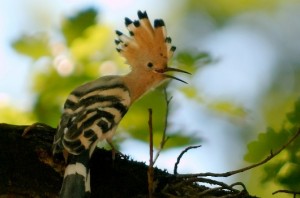 is located in the upper Lidder Valley above Pahalgam. The area is largely forested and has a good pheasant population and other birdlife. Mammals include hangul, musk deer, serow, langur, leopard. Best time to visit: Apr.—Oct. Accommodation: resthouse, camping sites Permission: The Chief Wildlife Warden, Srinagar Nearest town and Air: Srinagar (47 miles) Other sanctuaries include Lungnag (Kargil Dist.), Nandi (Jammu Dist.), Ramnagar (Jammu Dist.) and Surinsar Mansar (Udhampur Dist.). A second biosphere reserve at Gulmarg covering 112 sq miles (180 sq km) has also been proposed.
is located in the upper Lidder Valley above Pahalgam. The area is largely forested and has a good pheasant population and other birdlife. Mammals include hangul, musk deer, serow, langur, leopard. Best time to visit: Apr.—Oct. Accommodation: resthouse, camping sites Permission: The Chief Wildlife Warden, Srinagar Nearest town and Air: Srinagar (47 miles) Other sanctuaries include Lungnag (Kargil Dist.), Nandi (Jammu Dist.), Ramnagar (Jammu Dist.) and Surinsar Mansar (Udhampur Dist.). A second biosphere reserve at Gulmarg covering 112 sq miles (180 sq km) has also been proposed.

